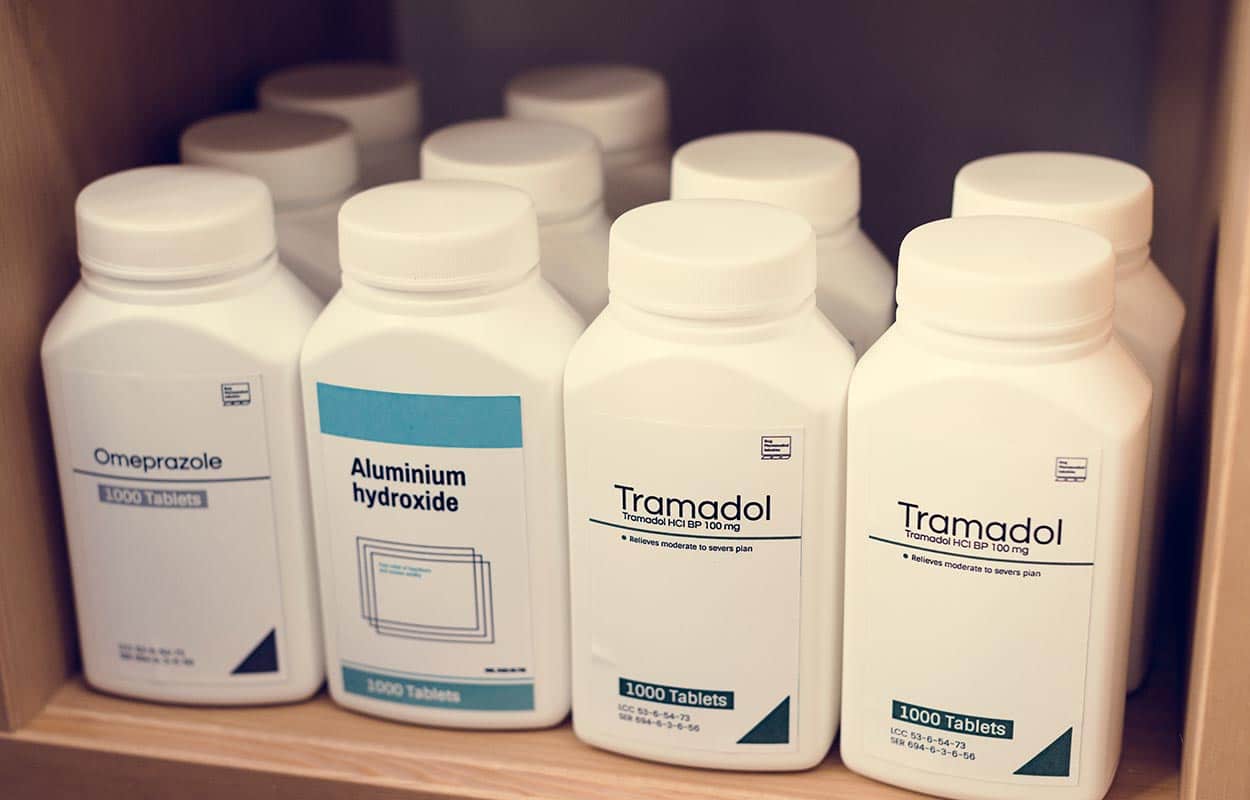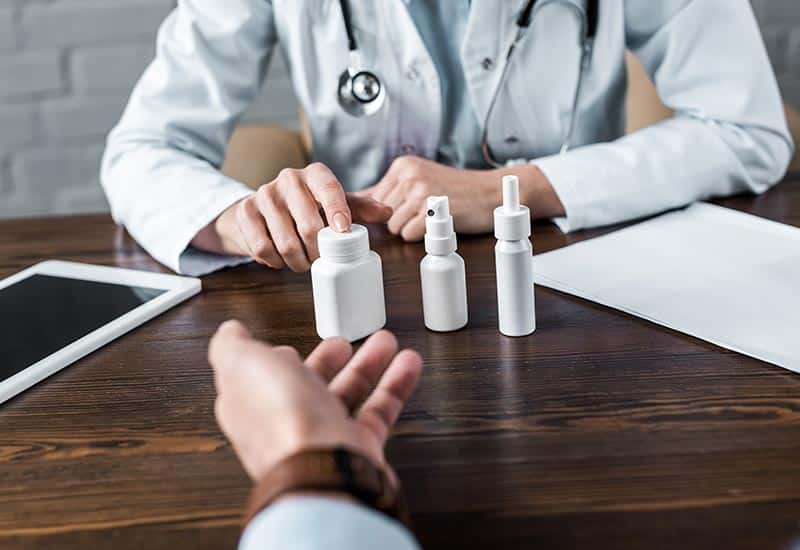How Long Does Tramadol Last? Duration, Clearance, & Safety
Medically Reviewed By:
Written By:
Updated On: June 23, 2025
Last Medical Review On: June 23, 2025

Table of Contents
Key Points
- Immediate-release tramadol generally provides pain relief for about 4–6 hours, while extended-release formulations are designed for 12- or 24-hour dosing, depending on the product.
- Tramadol has both opioid agonist activity and monoamine reuptake inhibition, which can lead to unique risks—especially interactions increasing serotonin levels or seizure risk.
- Tapering & non-opioid options can be viable alternatives to continued use
U.S. labeling indicates tramadol for pain severe enough to require an opioid analgesic for which alternative treatments are inadequate. It has two primary ways that it works on your system. First, it acts weakly on opioid receptors, but it also impacts serotonin and norepinephrine. Both of which can affect how your nervous system processes pain signals. Patients will usually take it as an immediate-release tablet or solution to manage short-term pain or as an extended-release version that manages ongoing, chronic pain.
Getting a better understanding of how long tramadol lasts for pain can help you better plan for safe dose timing, but that’s not all. It can also help you anticipate when it will begin to wear off and how to spot the lingering effects. Our main objective is to prevent extra doses too soon and lower the potential for dangerous reactions.
How Long Does it Take Tramadol to Wear Off?
Immediate-Release Timing
For immediate-release formulations, most patients will start to feel some degree of relief within 30 to 60 minutes. The effects of it will generally peak in 2 or 3 hours, while providing pain relief for up to 6 hours.[1] This is why IR formulations are more commonly given dosing schedules of about every 4 to 6 hours or so, unless directed differently by a clinician.
Extended-Release Timing
Extended-release tramadol formulations are designed for either once- or twice-daily dosing, depending on the specific product and manufacturer’s instructions. It reaches peak blood levels later than IR types and provides up to 24 full hours of coverage when taken exactly as directed.[2] Steady state is typically reached in ~2 days (about five half-lives) for tramadol/M1 with routine dosing.
What “Wearing Off” Feels Like
When the tramadol in your system tapers off, the pain that it was controlling will often come surging back first. Many patients also feel the default level of sedation fading with mild nausea, but many feel a new level of restlessness or sweating.
If you’re feeling like your pain is rebounding too early, have a chat with your provider instead of taking another dose before it’s time. IR products shouldn’t be taken more often than directed, and ER products should not be split or chewed, generally speaking.
A Closer Look at Half-Life: Fading Relief & Lingering Effects
A drug’s half-life is the average time it takes for the amount in your bloodstream to fall by half. Tramadol’s average half-life is about 6 hours, and the active metabolite O-desmethyltramadol (known as M1) averages about 7 hours.[3] This means that even after the pain relief has worn off, the drug use can still be detectable in the system with drug tests. This is also why effects like drowsiness may outlast the analgesic effects.
Because both tramadol and M1 contribute to effects, repeated dosing can lead to accumulation until a steady state is reached.[4] Factors like age, liver or kidney function, and interacting medicines can further slow metabolism and clearance. Work with your clinician on timing and never increase the dose with the goal of “chasing” relief that didn’t come with the last dose, which only increases the risk of respiratory depression, seizures, and even serotonin syndrome.
Factors That Change How Long Tramadol Lasts
The duration of tramadol’s effects is different for everyone. The product you take, the dose, your health, and the other medicines in your routine can all stretch or shorten its effects.
Keep in mind that the duration for pain relief is not the same as how long the drug stays in your body. Some side effects can linger even after pain control fades.
Form and Dosage
Immediate-release products tend to wear off sooner than extended-release versions that deliver medication over a longer period. Larger single doses may feel stronger or seem to last longer, but they also raise the chance of side effects. Follow the exact directions on your label and never break, crush, or chew extended-release tablets or capsules. Doing so can release too much medicine at once. Taking doses closer together than prescribed also increases the risk.
Age, Liver, and Kidney Function
Your body clears tramadol through the liver and kidneys. Older adults and people with liver or kidney problems often process it more slowly. That can make effects last longer and increase side effects like drowsiness or confusion. Your prescriber may recommend a lower dose, more time between doses, or a different product. Regular hydration, good sleep, and avoiding alcohol can also reduce unwanted effects.
Interactions with Other Drugs
Tramadol is like many other opioids in that it interacts with a lot of different medicines. Antidepressants that alter serotonin or norepinephrine levels can raise the risk of developing serotonin syndrome.[5] Central nervous system depressants, like benzodiazepines or alcohol, can often intensify respiratory depression and drowsiness.
With this in mind, it’s important to remember that many medicines also change your body’s metabolic processes. This means that it can change how tramadol is converted into its active metabolite, which can dramatically alter both the baseline ability to control pain and the side effects resulting from use.
How Long Does Tramadol Take to Wear Off For Pain vs Side Effects
With immediate-release tramadol, most users will start to feel pain relief for around 4 to 6 hours. Side effects like dizziness or drowsiness can linger long after the pain control has faded, since both tramadol and M1 will stay in the body for several hours. Products in the extended-release family are designed to avoid rebound pain for up to 24 hours when taken exactly as directed.
Driving, Work, and Safety Following a Dose
If you’ve been prescribed tramadol, you should always plan any activities that need alertness for times between doses when sedation is at its lowest. If you’ve noticed slower thinking, poor coordination, or unusual restlessness, wait until you’re feeling fully alert, and speak to your provider about making adjustments to the dosage or timing of your prescription.
Side Effects and Risks that can Last Longer than Pain Relief
Common effects include nausea, dizziness, drowsiness, headache, constipation, and sweating. Serious risks can occur even at prescribed doses, including life-threatening respiratory depression, seizures, and serotonin syndrome. These risks rise with higher doses, with certain health conditions, and when tramadol is combined with serotonergic medicines like some antidepressants.
Know the red flags that need urgent care: trouble breathing, extreme sleepiness or confusion, fainting, agitation, fever, muscle stiffness, loss of coordination, or seizures.[6] Do not split or crush extended-release products, and don’t take extra doses when pain returns early. If you’re unsure whether symptoms are side effects or early withdrawal, call your prescriber or seek emergency care.
Withdrawal Symptoms & Tapering Dosage
Stopping tramadol suddenly after regular use can trigger opioid withdrawal. Symptoms can begin 8 to 24 hours after the last immediate-release dose, peak over the next couple of days, and often improve within about 4 to 10 days. Individuals going through withdrawals may feel flu-like symptoms, stomach upset, muscle aches, sweating, anxiety, insomnia, and cravings.
Don’t self-taper; always partner with a trusted healthcare provider. A clinician can design a gradual dose reduction, monitor for complications like seizures, and time the switch from extended-release to safer step-down schedules. For opioid use disorder, prescription drugs for addiction treatment and managing physical dependence, such as buprenorphine, can reduce withdrawal symptoms and cravings when paired with counseling.
Some people experience lingering symptoms such as sleep problems or mood changes after acute withdrawal ends. This protracted withdrawal can last weeks or longer and is best managed with follow-up care and support.
Pain Management Strategies without Escalating Tramadol
Collaborate with your provider or clinician about combining non-opioid treatments, including targeting physical therapy, joint or nerve injections when needed, and mind-body cohesion skills like paced breathing or pain coping. Heat or cold therapy, stretching, and graded activity can reduce flare-ups.
Questions for Your Provider
- What’s the shortest safe course for me?
- Could I switch to immediate-use only as needed?
- Are there non-opioid options that fit my condition?
- How do we taper if side effects appear?
- What signs should prompt me to stop and call you?
When To Seek Professional Help
If tramadol use has gotten hard to control, you’re not alone. If you’ve started taking more than prescribed, taking them too frequently, always thinking about the next dose, or find yourself skipping responsibilities. No matter how hopeless it may feel, professionals are standing by to help you through the process, and peers who have gone through it to keep you optimistic.
Reach out today, and get your personalized recovery treatment plan. With medically managed detox, coping skill cultivation, and support for co-occurring mental health conditions, you’ll be ready to face long-term recovery. When you need it, MAT can be used to help curb cravings and reduce ongoing withdrawal symptoms. If you’re ready to talk, our admissions team is ready to start verifying your insurance benefits and collaborate on the next steps today.
Frequently Asked Questions About How Long Tramadol Lasts
How long does tramadol stay in your system?
That depends on the dosage schedule, as well as the test method. Blood is typically the shortest, while urine can detect it for several days after the last dose. Hair testing will generally have the longest detection time of several weeks or even months.
What are the common withdrawal symptoms, and how long do they last?
Regular use with a sudden stop can result in withdrawals happening in as little as 8 to 24 hours. Symptoms generally peak a few days into the process, usually fading over the next 5-7 days.
How can I lower the risks of tramadol use?
Tramadol, classified as a Schedule IV controlled substance in the U.S., has a lower abuse potential than Schedule II opioids but can still cause dependence, misuse, and addiction.
There is a Better Way to Live. It's Time to Get the Help You Deserve.
Take the first step in getting your life back. Speak with our admissions team today.Sources
[1][2]Dhesi, M. (2024, February 20). Tramadol. StatPearls [Internet]. https://www.ncbi.nlm.nih.gov/books/NBK537060/
[6]U.S. National Library of Medicine. (n.d.-b). Tramadol: Medlineplus Drug Information. MedlinePlus. https://medlineplus.gov/druginfo/meds/a695011.html
[3]Mayocliniclabs. (n.d.-e). https://www.mayocliniclabs.com/api/sitecore/TestCatalog/DownloadTestCatalog?testId=62595
[4]GD;, G. K. B. (n.d.). Identification of tramadol and its metabolites in blood from drug-related deaths and drug-impaired drivers. Journal of analytical toxicology. https://pubmed.ncbi.nlm.nih.gov/9399121/
[5]I;, H. S. K. W. (n.d.). Tramadol: Understanding the risk of serotonin syndrome and seizures. The American journal of medicine. https://pubmed.ncbi.nlm.nih.gov/29752906/



